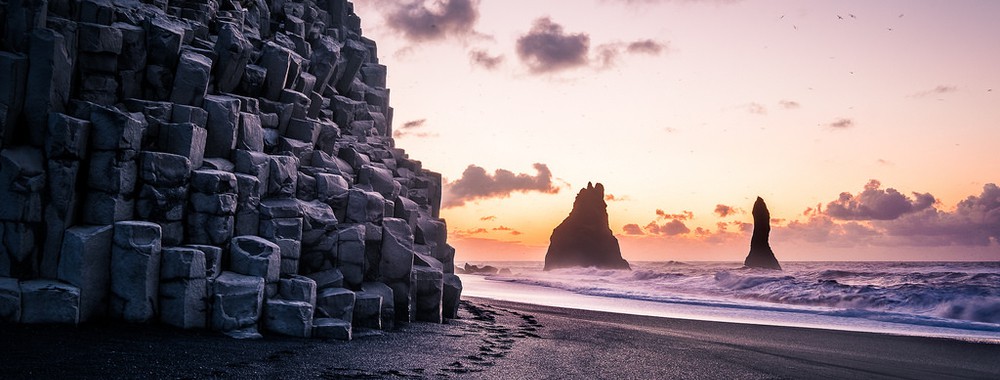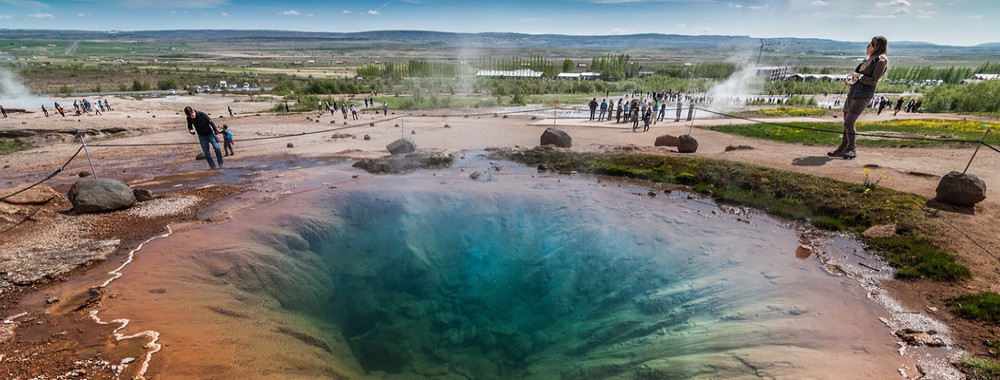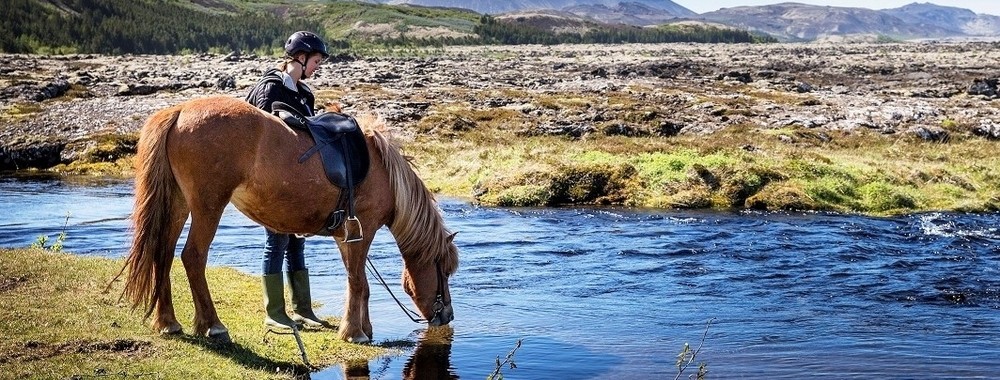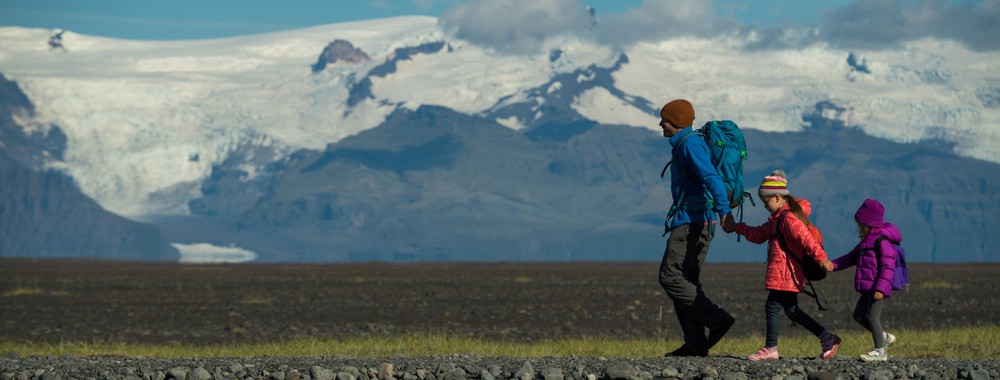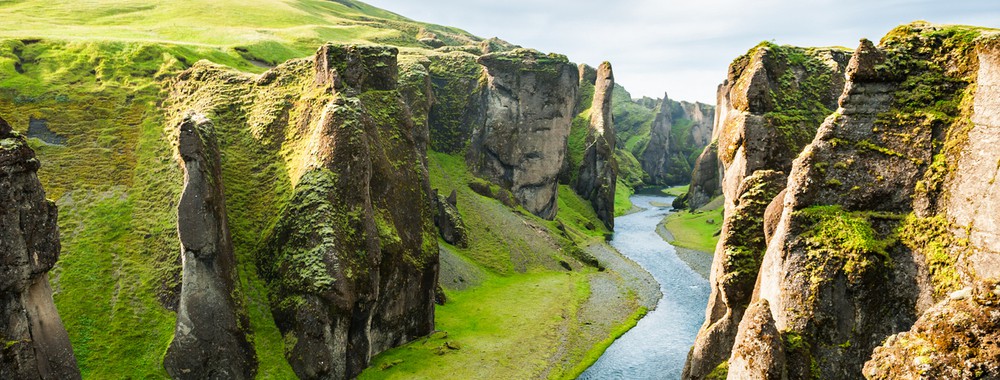- About Us
- Hotels
- Resorts
- Excursions
- Car Hire
-
Blog
- Food & Drink
- Things to do in Iceland
- Iceland Holidays
- Iceland Volcano Latest News
- People & Places in Iceland
- Climate, Geology & Seismic Activity in Iceland
- Travel & Hotels in Iceland
- Northern Lights in Iceland
- Reviews
- Icelandic Culture & History
- Landscape & Wildlife in Iceland
- Blue Lagoon and Hot Springs
- Corporate Incentive Group Trips to Iceland
- Iceland and COVID-19
- Geysir Geothermal Area Iceland
- Super Jeep Tours
- Films & TV Shot on Location in Iceland
- Contact Us
Iceland is full of so many remarkable sights that it’s difficult to know where to begin! With this handy guide, we give you a run down of all the top Iceland attractions.
Top Sights to See in Iceland
- GULFOSS. A highlight of the Golden Circle tour, the mighty Gullfoss Waterfalls are an awe inspiring sight. Double falls tumble into a deep ravine, while drenching clouds of spray create multiple rainbows on sunny days.
- BLUE LAGOON. A by-product of Iceland’s geothermal energy usage the rich mineral-laden waters of the Blue Lagoon have made it a renowned health spa. Visitors can wallow in one hectare of the lagoon where the water temperature is around 40 degrees. This is probably Iceland’s best known attraction and it is situated close to Keflavik International airport.
- REYKJAVIK. This is a modern, attractive and lively city with a dramatic setting and rustic charm that makes it unique amongst European capitals. The old centre, situated around Tjornin Lake, has become famous for its boisterous nightlife, with a plethora of pubs and restaurants.
- PINGVELLIR. When Iceland’s early settlers formed a Commonwealth in AD 930, they chose the natural amphitheatre at Pingvellir as the site for their national assembly. Revered by Icelanders, it is on UNESCO’s World Heritage list.
- GEYSIR. The geothermal hotspot of Geysir has given its name to all such waterspouts (geysers) around the world. The Great Geysir itself only rarely erupts but the nearby Strokkur sends a column of water skyward every 5 minutes or so - but don’t stand too close, the water is hot!
- EAST FJORDS – The East Fjords is one of the least-visited parts of Iceland but has plenty to offer in terms of scenery. The region is centred on the town of Egilsstaðir, inland from Seyðisfjörður, where ferries travel to the Faroe Islands and on to Norway, Denmark and Scotland.
- AKUREYRI – With a population of around 18,500, Akureyri is Iceland’s second largest town. It’s majestic backdrop of granite mountains makes it a prime ski resort and despite its northerly location, summer temperatures are often markedly higher than Reykjavik’s.
- JOKULSARLON – One of Iceland’s most photogenic spots, the iceberg-filled lagoon at Jokulsarlon has only been in existence since the early 20th century when the path of a nearby glacier to the sea became blocked. A boat trip on the lagoon is a magical experience.
- LAKE MYVATN – The beautiful, volcanically active area of Lake Myvatn is a major breeding ground for birds. An oasis on the edges of Iceland’s bleak northern wastes, it is surrounded by a unique mix of craters, lava fields, bubbling mud pools and geysers.
- JOKULSARGLJFUR – Asbygi Canyon and Dettifoss waterfall are two of the spectacular highlights at Jokulsargljur in Iceland’s remote north east. The two-day walk from the most accessible part of the canyon to Dettifoss – Europe’s largest waterfall – is highly recommended.
- SNAEFELLSJOKULL – At the tip of the long, utterly magnificent Snaefellsnes Peninsula is the 1,446 metre volcano of Snaefellsjokull, it’s snowy peak visible from as far away as Reykjavik on a clear day. Jules Verne chose Snaefellsjokull as the gateway to the earth’s core in Journey to the Centre of the Earth.
- VESTMANNAEYJAR – The 13 small islands of the Vestmannaeyjar (Westman islands) offer the southwest coast combine a serenity with raw natural beauty. The volcanic archipelago includes the island of Surtsey which only appeared after a huge eruption in 1964.
- ISAFJORDUR – Isafjordur is the focal point of the little-visited West Fjords, the remote, claw-shaped peninsula in the northwest of Iceland. It’s appeal lies in its dramatic location and historic buildings
- VIK – The small town of Vik stands along a stormy stretch of north Atlantic coastline. The black sand beach is framed by cliffs and towering fingers of dark rock rise out of the foaming sea. Vik is inhabited by colonies of Arctic terns.
- CULTURE HOUSE – Near Reykjavik’s National Theatre is the Culture House where you’ll find a well-conceived exhibition of Iceland’s ancient sagas and other medieval manuscripts, telling the tale of life in the North Atlantic during the Viking Age. Upstairs, regularly changing exhibitions focus on different aspects of the country’s heritage. It is all housed in a splendid building that opening in 1909.
- NATIONAL MUSEUM – Reykjavik’s National Museum houses the majority of archaeological treasures that have been unearthed from around Iceland over the years and provides great insight into Icelandic cultural history.
- FLATEY – The remote and partially deserted island of Flatey in the West Fjords is a tranquil delight. The restored timber homes and the country’s oldest, smallest library remind the visitor of how an Icelandic village used to be.
- EYRARBAKKI – The small town of Eyrarbakki was one of Iceland’s main fishing ports from the 12th to 19th There are several 18th and 19th century buildings still intact; the oldest, simply called Husid (The House), contains the Arnessysia Heritage Museum. The Maritime Museum is in an adjacent building.
- REYKJAVIK’S NIGHTLIFE – Increasing numbers of people visit Iceland primarily to sample Reykjavik’s nightlife, hip and happening to an extent that would put a city ten times its size to shame. On Friday and Saturday nights, the bars start to fill up in earnest at around 10 or 11pm, with the majority staying through till closing time at 6am.
- NATIONAL GALLERY – Originally built for storing ice taken from nearby Tjorn Lake, the National Gallery has been successfully transformed into a light-filled exhibition space for Icelandic artists. The permanent displays are supplemented by visiting exhibitions.
- STONG -For anyone even vaguely interested in the Saga Age history of Iceland, a visit to the excavated Viking longhouse at Stong is a must-see. There isn’t much left at the original site other than the stone foundations, but nearby Þjóðveldisbær is an excellent reconstruction of made using the Stong floorplan and traditional building methods.
- OPEN AIR MUSEUM – Out in the Reykjavik suburbs, the Open Air Museum is a living history museum that offers a schedule of events on summer weekends. Many historic buildings have been moved here from various locations and the past is recreated as accurately as possible. Old household items and furnishing are on permanent display, and the old turf church is a popular spot for weddings.
- SKAFTAFELL – The glaciers and peaks of Skaftafell (the most popular area of Vatnajokull National Park) are all the fingers of the vast ice cap of Vatnajokull, which covers an area of 8,500sq, larger than all the glaciers of the rest of Europe all together and a twelfth of the entire island of Iceland. Most visitors choose to hike up to Svartifoss Waterfalls for its striking, photogenic backdrop of basalt columns that give it a grand organ-pipe effect and its name “Black Waterfall”.
- GRIMSEY – The remote, weather-beaten island of Grimsey is the most northernly point of Iceland, the only place in the country that extends beyond the Artic Circle and once you’ve crossed it, you can buy yourself a commemorative certificate from the local café. The sheer isolation of this piece of tiny land, with a population of just 90, has its own peculiar Icelandic appeal: the scenery is wide and beautiful, the birdlife extraordinary while the people remain beguilingly eccentric.
- HORNBJARG BIRD CLIFFS – In the upper reaches of the far northwest lies a region of soaring cliffs, home to millions of sea birds (guillemots, Brunnich’s guillemots, razorbills, puffins, kittiwakes and fulmars), culminating in the magnificent Hornbjarg Bird Cliffs in the protected (and uninhabited) Hornstrandir Reserve. Most people arrive on the ferry from Isafjordur, which runs several times a week in summer.
- WHALE WATCHING – One of the most popular activities for visiting is Whale Watching. Whale watching starting in Iceland in 1995 but since then the number of companies offer tours has been increasing. Most tours operate from Olafsvik on the north east coast of the Snaefellsnes peninsula, or from Husavik in the north east. The most common sighted whale is the minke, with killer whales, sperm whales, humpbacks, fin and even blue whales also seen. The best time for sightings is in late spring and early summer.
- THORSMORK – Sealed off by three glaciers, two deep rivers and a string of mountains is the valley of Thorsmork – literally ‘Thor’s Forest’. It is one of Iceland’s most inaccessible but rewarding wilderness areas. The single dirt road into the park is impassable to everything but the specially designed high carriage mountain buses and some of the Super Jeep oversized Icelandic four wheel drives which can make it in when the glacial rivers are low, usually in the early morning. A nature reserve since 1920, it offers fabulous glacier-filled panoramas, fields of wildflowers, pure glacial streams and -rare for Iceland – forests of birch and willow.
- HORSE RIDING TOURS – Travelling on horseback is an exhilarating experience. A variety of horse riding tours are available to suit all levels, mostly concentrated in the southwest and a great number of them can be booked in advance from abroad. Riding all day among deserted valleys and mountains, fording rivers, leading your second mount which carries supplies and bedroll will give you a real insight into the way Icelanders used to live. The Icelandic horse is well known around the world as small, sturdy, sure-footed and good natured – making it ideal for inexperienced riders.
- INTERIOR – Iceland’s barren interior is forbidding, largely uninhabited and a premier attraction for adventurous visitors. Nowhere else in Europe is so remote from civilisation or offers such a range of scenery and some of the most dramatic that Iceland has to offer. Sights include broad icecaps which spit their sides into great glacial tongues, volcanoes of every size with extensive fields of block lava and pumice, freezing deserts and endless outwash plains of black sand. The most popular way to see this vast expanse is by taking a four-wheel-drive along one of the tracks – the Kjolur route, the Askja route or the Gaesavatnaleid route.
- LAVA CENTRE - The Lava Centre Interactive Exhibition in Hvolsvöllur is a high-tech educational exhibition depicting volcanic activity, earthquakes and the creation of Iceland over millions of years. Examine the various volcanos—eruptions and lava flows, volcanic and rift systems, faults and glacial floods that make Iceland a showcase of volcanism. The centre introduces the Katla Geopark plus Iceland’s elaborate monitoring system for surveying volcanos and earthquake zones.
- View all our latest offers here
-
Reykjavik City Breaks
from £599.00 View offers -
Fly Drive Holidays Iceland
from £679.00 View offers -
Guided Iceland Bus Tours
from £649.00 View offers -
Luxury Iceland Breaks
from £849.00 View offers -
Northern Lights Holidays Iceland
from £599.00 View offers -
Top 10 Iceland Holidays
from £699.00 View offers -
North Iceland Holidays
from £999.00 View offers -
Group Travel & Solar Eclipse Iceland 2026
from £599.00 View offers
Call us on +44 (0) 1773 850222

Thank you so much Gareth for organising such a lovely holiday for us! We gave a basic outline of what we wanted from our holiday and Gareth organised everything. Everything ran very smoothly and what an amazing experience. Thank you for all your suggestions, so glad we took them on
We are here to reassure you that you can trust our team with your Iceland holiday plans, knowing that all bookings with us are ATOL protected


